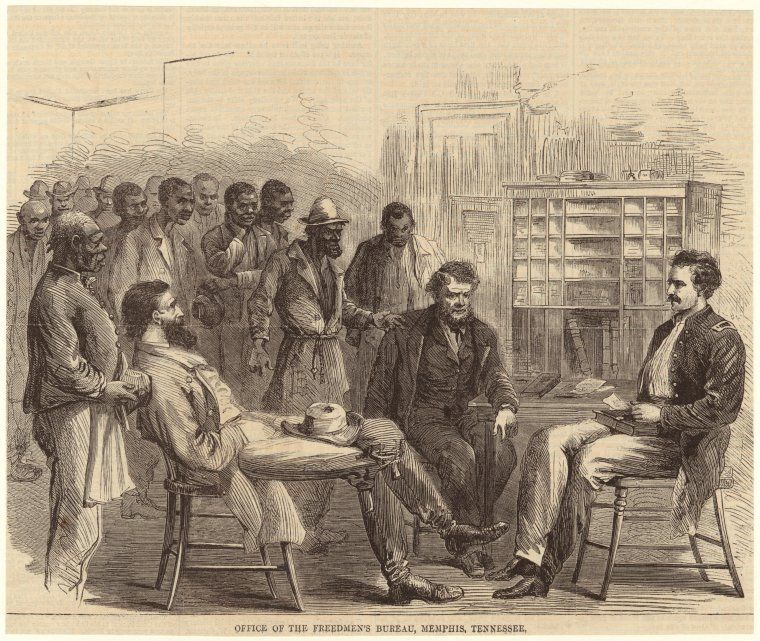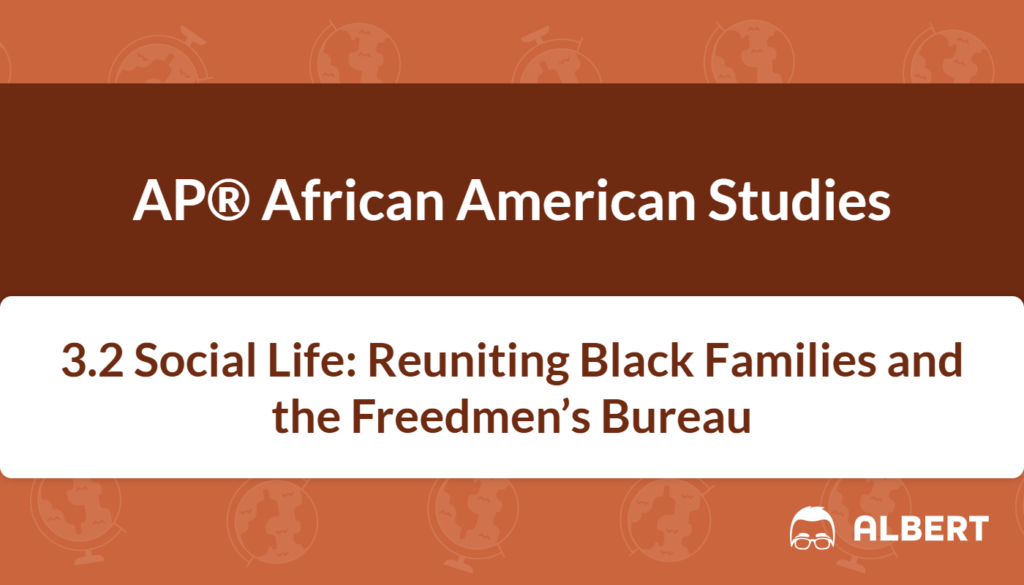What We Review
Reuniting Black Families: The Role of the Freedmen’s Bureau
Introduction
After the Civil War ended in 1865, the United States entered a period of major transformation. Formerly enslaved African Americans faced many obstacles as they worked to rebuild their lives and reconnect with relatives lost to slavery’s harsh system. During this era, the U.S. government established the Freedmen’s Bureau to offer critical support. Known officially as the Bureau of Refugees, Freedmen, and Abandoned Lands, it played a central role in helping African Americans secure family bonds after centuries of disruption.
This article explores the Freedmen’s Bureau’s definition, main functions, and how it led efforts to reunite Black families. The journey involved searching for missing relatives, legalizing marriages, and creating new family traditions. Understanding this history helps us appreciate the resilience of African American families and their attempts to rebuild and celebrate togetherness.
The Freedmen’s Bureau – Purpose and Establishment
What Is the Freedmen’s Bureau?
The Freedmen’s Bureau definition often refers to a government agency that provided assistance to newly freed African Americans. It was formed to help manage property abandoned during the Civil War and to ensure that individuals transitioning from enslavement had food, clothing, education, and legal protection. Its mission was huge: build schools, offer medical help, and reunite broken families.
Establishment of the Freedmen’s Bureau
In 1865, Congress passed “An Act to Establish a Bureau for the Relief of Freedmen and Refugees.” This measure launched the Freedmen’s Bureau. From 1865 to 1872, officials organized, documented, and coordinated relief efforts across the South. The Bureau’s primary function was to assist formerly enslaved people as they navigated their new freedoms. In addition, the government directed the Bureau to manage land and property confiscated during the war and ensure a fair transition to citizenship for African Americans.

Strengthening Family Bonds Post-Abolition
Impact of Slavery on African American Families
Slavery separated countless families. Relatives were often sold and transported far away, making it difficult to keep in touch. Because enslaved people were not legally permitted to marry or raise children without interference, traditional family life became nearly impossible for many. Despite these challenges, people established new kinship bonds by forming extended networks of support.
Searching for Lost Relatives
After the Civil War, individuals set out to find family members scattered across different states. Many turned to newspapers or word of mouth. Others received assistance from the Freedmen’s Bureau. Circular No. 11 (1867), for instance, shows how the agency issued guidelines and helped people communicate their searches.
Some families used local churches and community groups to post announcements about missing relatives. The story of Elizabeth Brisco searching for her husband Charles Brisco highlights the heartbreak and hope of these efforts. Likewise, an 1883 newspaper ad placed by Clarissa Reed in the Southwestern Christian Advocate is another example of how people reached far and wide to find long-lost loved ones.
Legalizing Marriages and New Traditions
What Does “Jumping the Broom” Mean?
During slavery, African Americans could not legally marry. As a result, communities created their own rituals to honor unions. One tradition, called “jumping the broom,” symbolized a couple’s commitment. By literally jumping over a broom placed on the ground, they marked their marriage in front of witnesses. The ceremony gave enslaved couples a sense of celebration, even though laws did not recognize their bonds.
Legal Recognition of Marriages
With the end of slavery, thousands of couples sought legal acknowledgment. They lined up at Freedmen’s Bureau offices or local courthouses to formalize their marriages. Many took the chance to change their names, marking the freedom to define their identities. The Bureau encouraged this process, recognizing that legal marriage offered stability for families and ensured rights like inheritance and child custody.
This shift from symbolic unions to recognized marriages changed the social landscape for newly freed African Americans.
Family Reunions – Celebrating Heritage
The Tradition of Family Reunions
As people found lost relatives, large gatherings became a powerful way to celebrate these reconnections. Family reunions emerged, allowing relatives separated by time and distance to meet again. Inspired by postemancipation searches, these gatherings often blended worship, storytelling, and feasting. They also sparked ongoing traditions that would shape African American culture for generations to come.
Preservation of History Through Reunions
Family reunions honor African Americans’ history and resilience. Older relatives often share memories of ancestors who endured monumental struggles. Music and culinary traditions—such as homemade barbecue or special desserts—bring families closer and keep cultural heritage alive. Over time, these reunions also became a platform for passing down knowledge of significant moments in Black history, reminding everyone of both tragic and triumphant stories.
Required Sources: Historical Context and Their Impact
- An Act to Establish a Bureau for the Relief of Freedmen and Refugees, 1865
- This law created the Freedmen’s Bureau and clarified its mission. It laid the groundwork for offering assistance to formerly enslaved people and helped define the path to citizenship.
- Circular No. 11 from the Bureau of Refugees, Freedmen, and Abandoned Lands, 1867
- This circular displayed the Bureau’s ongoing efforts to provide guidelines and resources. It shows how officials took steps to connect people with their missing relatives and manage abandoned lands.
- Elizabeth Brisco Searching for Her Husband Charles Brisco
- This real-life example demonstrates how individuals used Bureau resources and public notices to find missing spouses. The heartbreak of separation and the hope of reunion come through clearly.
- Clarissa Reed, ad in the Southwestern Christian Advocate, New Orleans, LA, 1883
- This advertisement highlights the continued use of newspapers years after emancipation. It reveals that even after legal bondage ended, many were still on the road to finding lost kin.
These sources confirm the Freedmen’s Bureau’s crucial function. Each document, act, or ad reflects the hope and dedication African Americans had for rebuilding family ties. Together, they illustrate the importance of preserving family identity amid drastic social change.
Section 5: Vocabulary Quick Reference
Below is a quick table defining some significant words and ideas. Copy and paste it into any document for convenient study:
| Term or Phrase | Definition or Key Feature |
| Freedmen’s Bureau | A government agency (1865–1872) that aided newly freed African Americans with food, clothing, education, and legal support. |
| Bureau of Refugees, Freedmen, and Abandoned Lands | The official name of the Freedmen’s Bureau, highlighting its management of seized lands and services for refugees. |
| Jumping the Broom | A tradition used by enslaved couples to symbolize marriage when legal ceremonies were denied to them. |
| Legal Marriage Post-Emancipation | The official recognition of marriage that formerly enslaved people pursued after the Civil War. |
| Family Reunions | Gatherings celebrating relatives who reconnected after slavery, preserving cultural traditions and ancestral histories. |
| “An Act to Establish a Bureau…” | The 1865 law authorizing assistance to formerly enslaved people and setting up the Freedmen’s Bureau. |
| Circular No. 11 | A Bureau-issued document (1867) providing guidance on assisting formerly enslaved individuals in reuniting families. |
| Newspaper Ads | A common method for people to post appeals seeking lost family members. |
Conclusion
The Freedmen’s Bureau served as a lifeline for countless African Americans immediately after the Civil War. Its role in distributing supplies, legalizing marriages, and reuniting families shaped the entire transition to freedom. These accomplishments brought renewed hope to people separated by the slave market and gave them the legal footing they needed to rebuild their lives. Family connections grew stronger—and continue to thrive today—thanks to the early efforts of the Freedmen’s Bureau and the determination of formerly enslaved men and women.
Sharpen Your Skills for AP® African American Studies
Are you preparing for the AP® African American Studies test? We’ve got you covered! Try our review articles designed to help you confidently tackle real-world AP® African American Studies problems. You’ll find everything you need to succeed, from quick tips to detailed strategies. Start exploring now!
Need help preparing for your AP® African American Studies exam?
Albert has hundreds of AP® African American Studies practice questions, free response, and full-length practice tests to try out.









